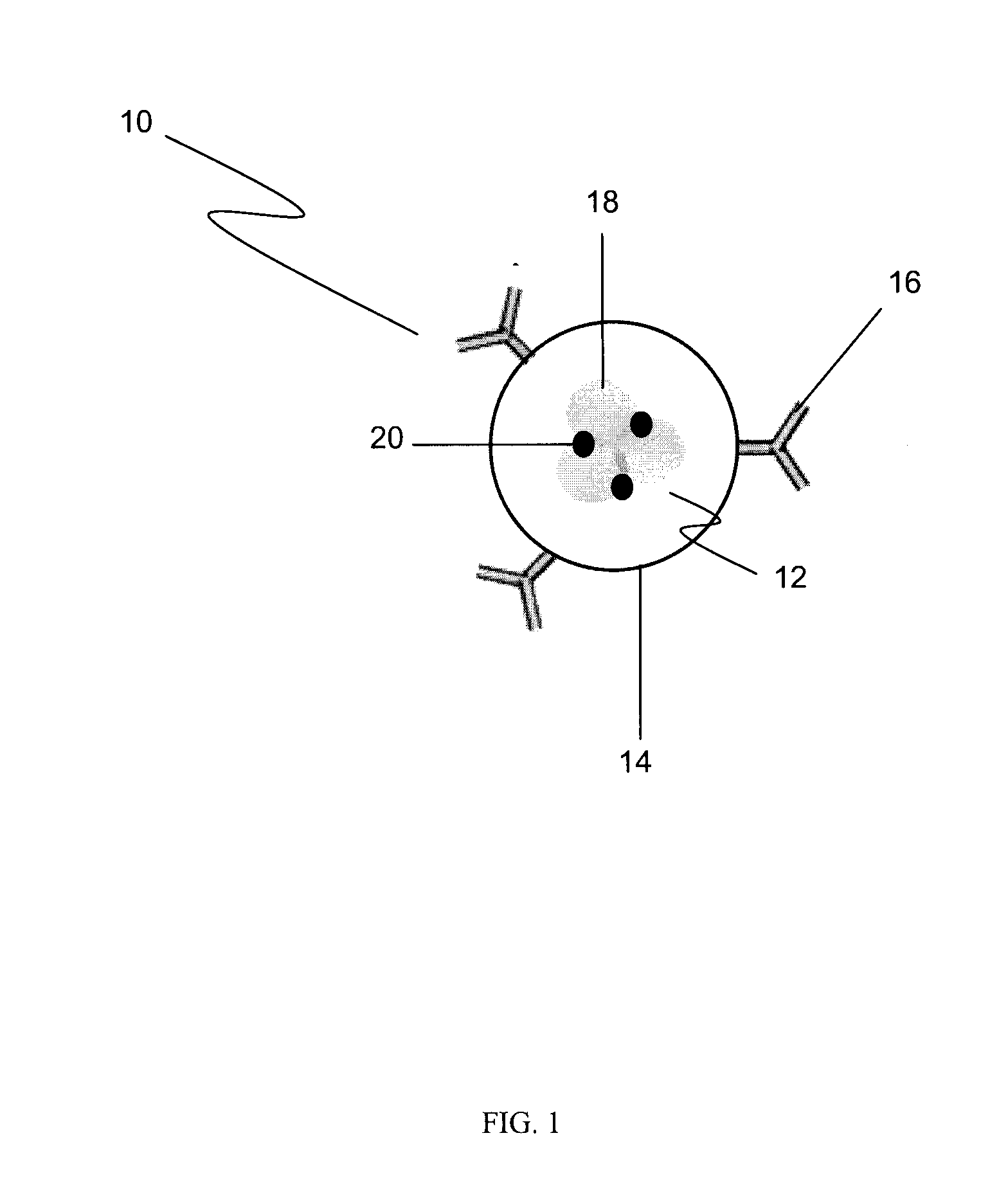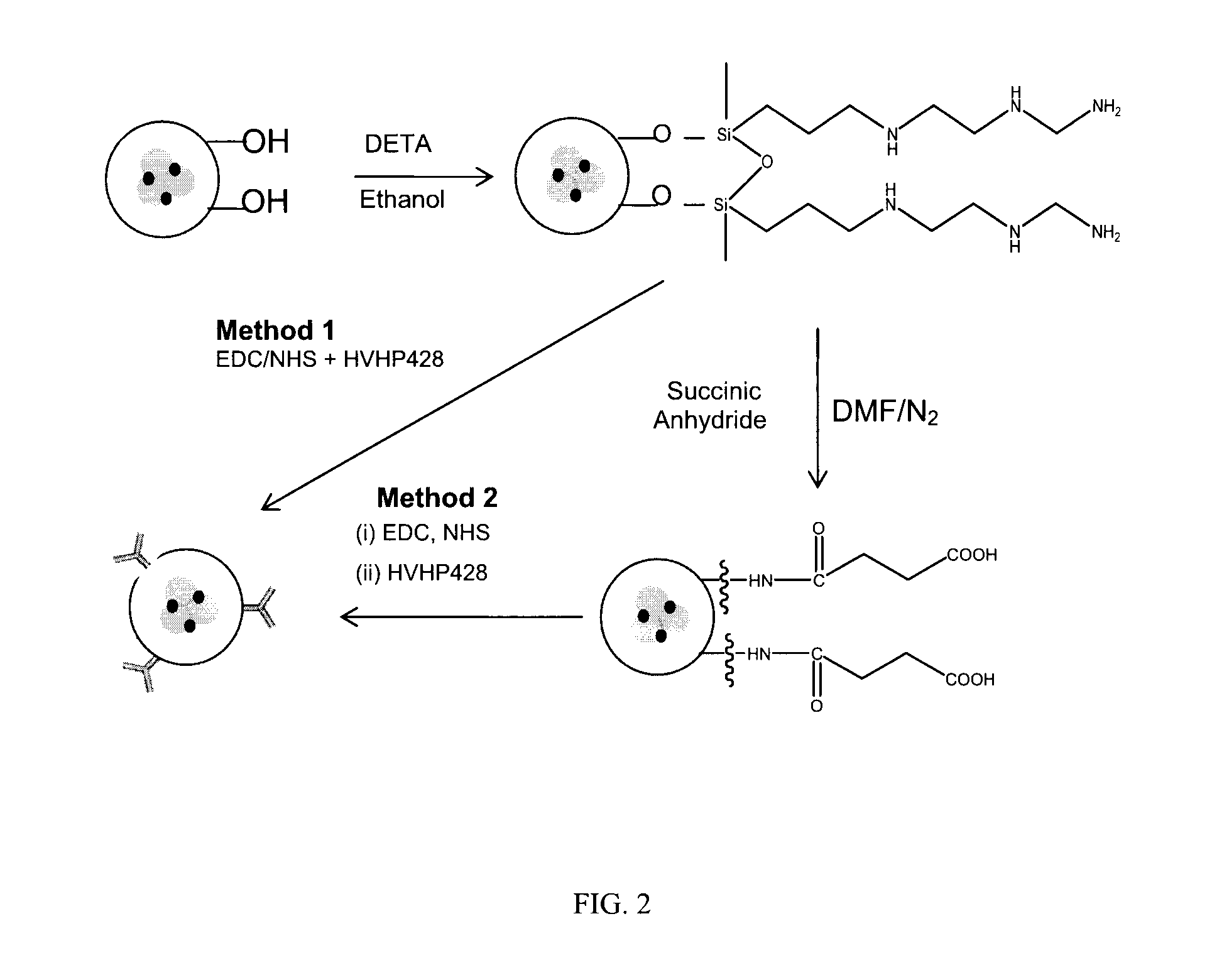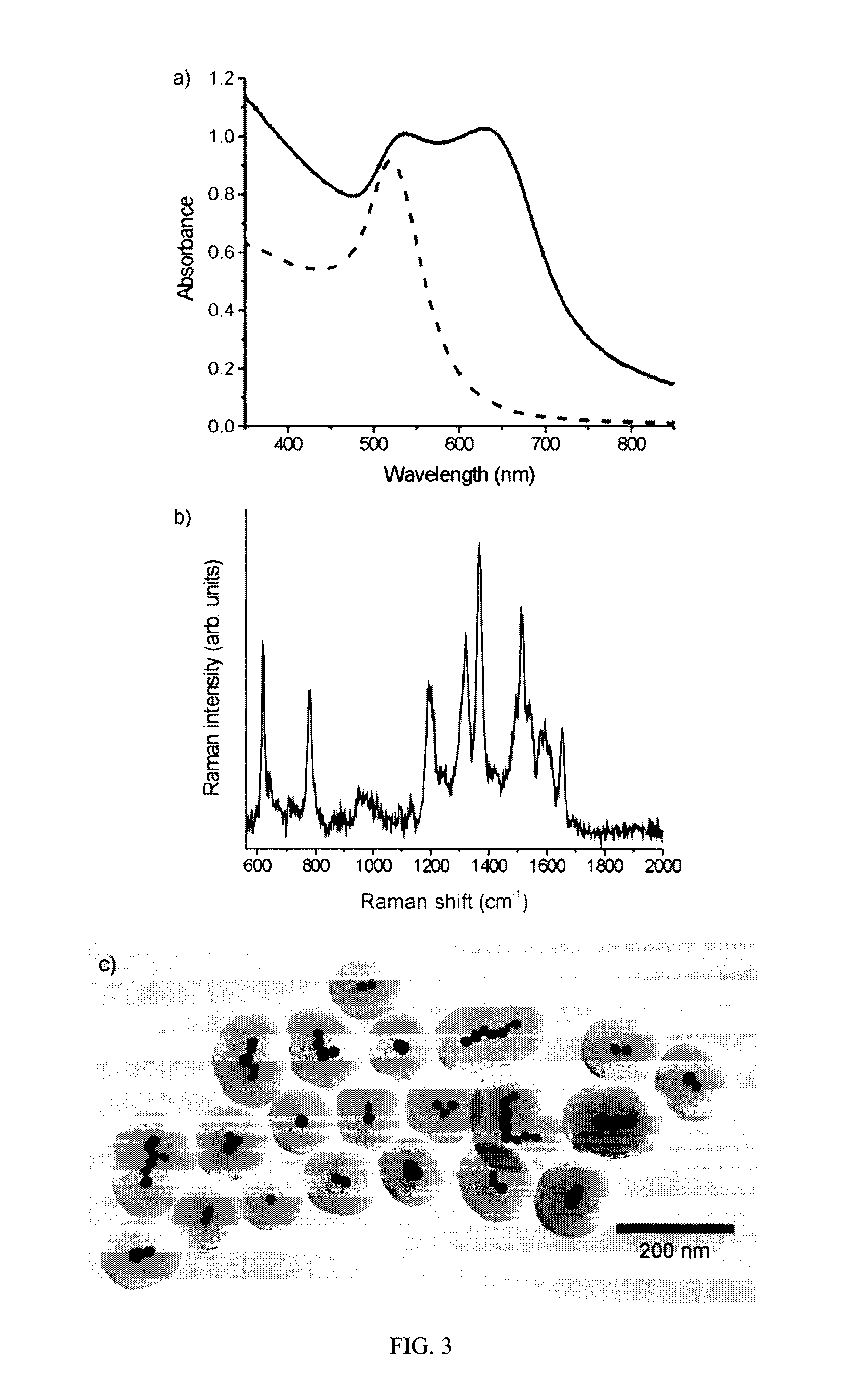Nanoaggregate Embedded Beads Conjugated To Single Domain Antibodies
a technology of nanoaggregate and embedded beads, which is applied in the field of nanoaggregate embedded beads conjugated to single domain antibodies, can solve the problems of lack of sensitivity and specificity, false positive results, and time-consuming methods, and achieve the effects of reducing detection time, high cost, and high specificity
- Summary
- Abstract
- Description
- Claims
- Application Information
AI Technical Summary
Benefits of technology
Problems solved by technology
Method used
Image
Examples
example 1
Silica-Coated Gold Nanoparticle Embedded Beads
[0082]Gold nanoparticles with a mean diameter of 12 nm were synthesized according to the literature procedures (Frens, 1973), which are well known to those skilled in the art. Controlled aggregation of the gold nanoparticles was achieved by adjusting the pH value of the colloidal sol prior to the addition of Raman-active reporter molecule by methods known in the art (Huang et al, 2009b). The pH value of the gold sol was adjusted to ˜10 with 100 mM NaOH. A solution of R6G (10−4 M) was introduced under vigorous stirring and allowed to equilibrate for 15 min. The concentration of the Raman reporter rhodamine 6G (R6G; Molecular Probes, Eugene Oreg.) after equilibration was 10−6 M. A coupling reagent, (3-mercaptopropyl)trimethoxysilane (MPTMS) in ethanol (˜10−4 M), was then added to the R6G / gold nanoparticles solution and allowed to equilibrate for another 15 min. The final concentration of MPTMS was about 6×10−7 M.
[0083]Silica coating was ac...
example 2
Surface Modification of the Nanoaggregate Embedded Beads (NAEB)
[0085]Before immobilizing sdAbs onto the NAEBs, the surfaces of NAEBs were chemically modified. To form the amine-functionalized group on the NAEBs surface, 3.0 mL of 1.0×1013 / mL NAEBs were reacted with 18.75 μL, of DETA in ethanol at room temperature in an overnight incubation. The solution was then held at a low boil for 1 h to promote covalent bonding of the organosilane to the silica surface of NAEB (Westcott et al, 1998). The solution was then centrifuged and redispersed in ethanol at least four times to remove excess reactants. The particles were then washed and re-dispersed in DMF. Grafting of carboxylate terminal group is accomplished by reacting the amine-terminated NAEBs with 10% succinic anhydride in DMF solution under N2 gas in an overnight reaction with continuous stirring (Levy et al, 2002). This results in the formation of carboxylate groups onto the NAEBs surface and prepares the beads for further conjuga...
example 3
Conjugation of sdAb
[0086]Conjugation of a single domain antibody, HVHP428 (To et al., 2005), to the nanoaggregate embedded bead prepared in Example 2 was achieved by activating the carboxylate functional group of the single domain antibody. Suitable reagents include 1-ethyl-3-(3-dimethylaminopropyl) carbodiimide hydrochloride (EDC) which is often used in combination with N-hydroxysuccinamide (NHS) to increase coupling efficiency or to create a stable product.
[0087]In Method 1, carboxylate functional group of the single domain antibody was activated by EDC and NHS coupling agent. The activated single domain antibody was then incubated with amine modified NAEB overnight at 4° C., followed by PBS buffer wash to remove unbound protein.
[0088]In Method 2, carboxylated-NAEBs were activated using EDC and NHS in PBS buffer (pH 7.0) for 1 h at room temperature under continuous stirring condition. Water-washed NAEBs were dispersed in 1.0 mL of 10 mM PBS buffer. Cross-linking of the sdAb was ac...
PUM
| Property | Measurement | Unit |
|---|---|---|
| Magnetic field | aaaaa | aaaaa |
| Metallic bond | aaaaa | aaaaa |
Abstract
Description
Claims
Application Information
 Login to View More
Login to View More - R&D
- Intellectual Property
- Life Sciences
- Materials
- Tech Scout
- Unparalleled Data Quality
- Higher Quality Content
- 60% Fewer Hallucinations
Browse by: Latest US Patents, China's latest patents, Technical Efficacy Thesaurus, Application Domain, Technology Topic, Popular Technical Reports.
© 2025 PatSnap. All rights reserved.Legal|Privacy policy|Modern Slavery Act Transparency Statement|Sitemap|About US| Contact US: help@patsnap.com



